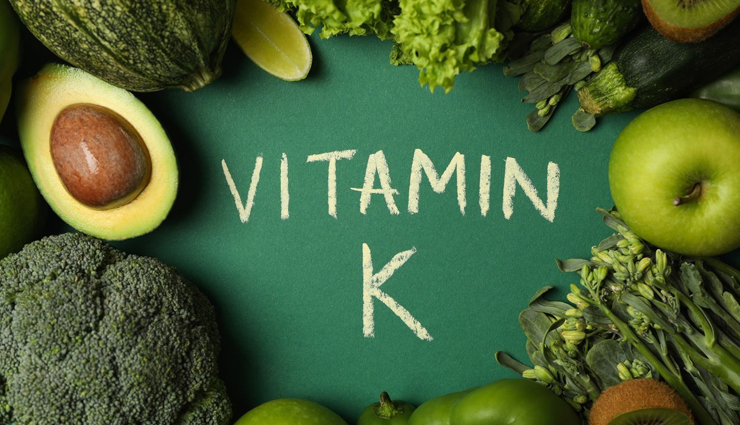- Home›
- Healthy Living›
- 6 Vitamin K Rich Vegetables You Must Eat
6 Vitamin K Rich Vegetables You Must Eat
By: Kratika Maheshwari Wed, 23 Nov 2022 12:03:45

It’s no secret that your body needs vitamin K, but how do you go about getting it from vegetarian sources? As it turns out, there’s some great news for you. Vegetables are actually among some of the richest sources of the clotting vitamin that your body needs to prevent excessive bleeding and maintain bone health. Just be prepared to eat your greens!
When it comes to food labeling and nutrient content, the vitamin K nutrient richness of a food is measured by comparing it to a daily value (DV), set by the United States Food and Drug Administration at 120 mcg for all adults. The level is pegged at 90 mcg for pregnant/lactating women. If a food has 20% DV or more of a nutrient, it is considered a rich source of that nutrient. As you’ll see in the list that follows, you have plenty of choices when it comes to vegetables that meet and exceed this number.

# Kale
Vitamin K is found in abundance in green leafy vegetables like kale. In fact, just half a cup of boiled kale contains an impressive 531 mcg of vitamin K – the equivalent of 442.5% DV. If you enjoy kale’s slightly bitter undertone, have them in salads. If not, try roasting kale leaves in the oven at a low temperature for a few hours to dehydrate them into the most crunchy and delicious kale chips. Or use it in a frittata with sausages and you may even begin to love it! Even a simple olive oil and garlic laced stir-fry might be an eye-opener. Kale also lends itself well to pesto sauce. So go ahead and experiment a little!

# Spinach
Evergreen spinach is a staple at even the smallest supermarket so you won’t have much trouble getting your hands on some. It is up to you whether you want to eat fresh tender leaves in a salad or use the spinach in a soup, stir-fry, or pasta. Whatever you decide, you’ll be getting lots of nutrition from it – each half cup of the boiled leaves contains 444.25 mcg of vitamin K, meeting 370% DV.

# Collard Greens, Beet Greens, And Swiss Chard
If you’re open to exploring other greens or are just tired of the familiar flavors of spinach, how about trying collard greens, beet greens, or perhaps some Swiss chard or turnip greens? They’re all very rich sources of vitamin K, clocking in at over 200% DV and going up to 322% DV of the nutrient. Piqued your interest? Collards have 386.25 mcg of vitamin K (322% DV), beet greens have 348.5 mcg of vitamin K (290.4% DV), Swiss chard has 286.4 mcg (238.7% DV), and turnip greens have 264.65 mcg (221% DV) per half cup of boiled greens.

# Scallions
If you like onions, you may also find you have a palate for scallions, the young delicious tasting spring onion – green leafy stalks, bulbs, and all! They liven up Asian soups, broths, noodles, and rice, not to mention how delicious they can be in savory scallion pancakes. You may also find scallions work so well with some all-American meals. For instance, your creamy or yogurty dip can do with a hit of color from scallions and so can your pizza! The Italians know what to do with scallions too – whether it is in pasta or cipollate con pancetta (bacon-wrapped scallions, for the uninitiated). Half a cup of scallions deliver 103.5 mcg of vitamin K – that’s 86.3% DV.

# Brussels Sprouts
Half a cup of cooked Brussels sprouts has about 109.4 mcg of vitamin K, getting you to a sizeable 91.2% DV. Don’t write off this delicious vegetable as an also-ran at the dinner table. They can be lip-smackingly delicious and oh-so-moreish roasted, chargrilled, or caramelized in a pan. Season lightly or add some crispy bacon bits to make them even better! They also taste delicious in a slaw, gratins, and Asian-style stir-fry recipes with steak, soy sauce, or kung pao sauce.

# Broccoli
While on brassica or cruciferous vegetables, you may want to have broccoli for that vitamin K boost. Half a cup of broccoli has 110 mcg of vitamin K or 91.7% DV. Enjoy yours roasted, plain, or lightly dressed in vinaigrettes. Or add broccoli to a beef and sesame stir-fry or Buddha bowl. Of course, there’s always that evergreen pairing with cheese. You could have it in a hearty cheese and broccoli soup or cooked with a golden cheesy crumb crust – it is hard to go wrong with this combination!





